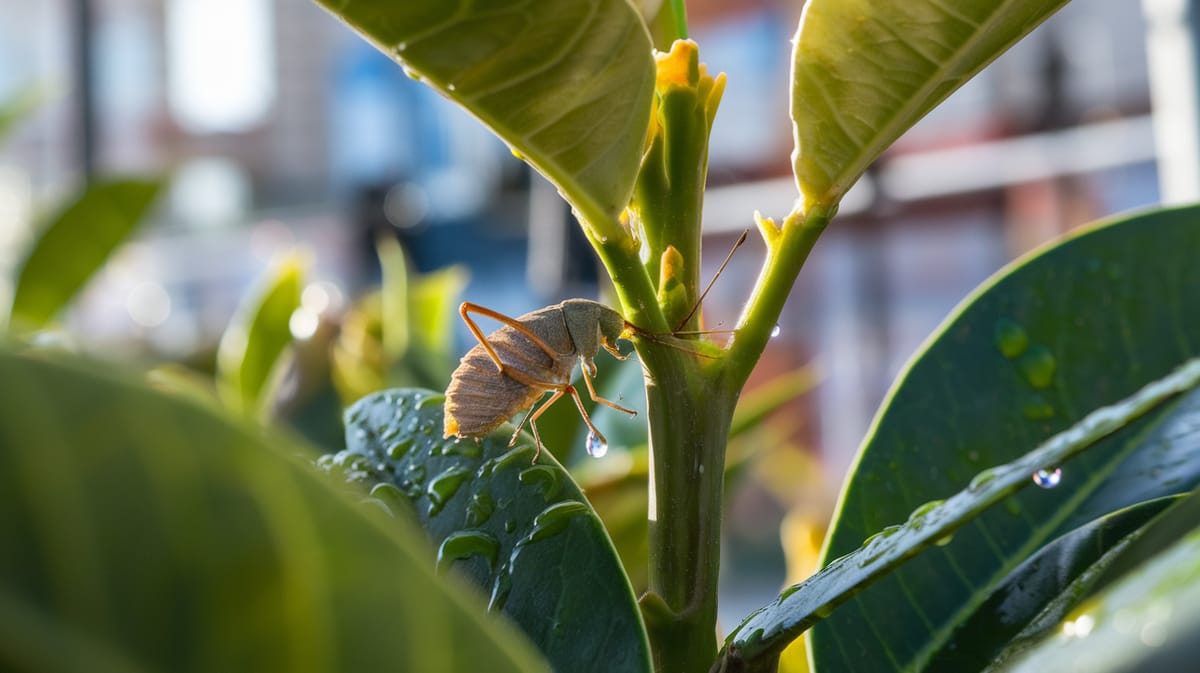Psyllid
Tiny architects of the plant world, psyllids use their specialized mouthparts to feed on sap while forming intricate galls. Their role in ecosystem balance is both unique and essential.

Key Insights at a Glance
Did You Know?
Taxonomy & Classification
Psyllids are small, sap-sucking insects known for their specialized mouthparts and ability to mimic plant structures, aiding in camouflage and survival. Let's understand the evolutionary journey and classification of these remarkable herbivores.
Global Distribution
Psyllids inhabit diverse environments worldwide, with over 3,800 species spread across various continents, highlighting their adaptability.
Evolutionary Adaptations
Dating back to the late Permian period, psyllids have adapted to survive by co-evolving with their host plants, enhancing their resilience.
Lifecycle and Growth
A remarkable journey of transformation from Egg to Adult.
Egg
Laid on plant tissues, psyllid eggs develop rapidly under favorable conditions, leading to the emergence of nymphs.
Nymph
Nymphs feed on plant sap, undergoing five molts as they grow, gradually developing wings and adult features.
Adult
Adults possess full wings and mobility, focusing on reproduction and dispersal to new host plants.
Dietary Habits
A specialized plant feeder, this insect targets sap from host plants, relying on piercing-sucking mouthparts for nutrient extraction.
| DIET TYPE | DESCRIPTION |
|---|---|
| Primary Diet | Primarily feeds on plant sap, particularly from young leaves and shoots of host plants. |
| Secondary Diet | Occasionally consumes honeydew produced by other insects or plant secretions as an additional food source. |
| Occasional | Rarely feeds on fungal spores or algae when plant sap is scarce, adapting to environmental conditions. |

Behaviour and Adaptations
Discover the fascinating traits and adaptations that define the Psyllid's survival in diverse environments.
Host Plant Specialization
Efficiently adapts to specific host plants for feeding and reproduction.
Jumping Ability
Uses strong hind legs for quick, powerful jumps to evade predators.
Wax Secretion
Produces waxy secretions that protect against dehydration and predators.
Ecosystem Impact
Psyllids play a crucial role in maintaining ecological balance and sustainability.
Plant Pollination Assistants
Facilitate pollination by transferring pollen while feeding on plant sap.
Nutrient Cycling Agents
Breakdown of plant material aids in nutrient recycling within ecosystems.
Prey for Predators
Serve as a food source for birds and insects, supporting biodiversity.
Conservation Challenges
Understanding and addressing the major threats to Psyllid populations.
Chemical Exposure
Pesticides threaten Psyllid populations by disrupting their life cycles.
Habitat Loss
Urban development and agriculture reduce Psyllid natural habitats.
Climate Change
Altered weather patterns affect Psyllid breeding and distribution.
Frequently Asked Questions
How long do Psyllid live?
Psyllids typically live for several weeks to a few months, depending on environmental conditions and available food sources. Their life span can be influenced by temperature, humidity, and host plant quality.
What do Psyllid eat?
Psyllids primarily feed on plant sap. They target specific host plants, often causing significant damage to crops like citrus, potatoes, and eucalyptus by sucking the sap from leaves and tender shoots.
Are Psyllid poisonous?
Psyllids are not poisonous to humans or animals. However, they can transmit plant pathogens, which may be harmful to certain crops.
Are Psyllid endangered?
Psyllids are not considered endangered. They are a common pest in many regions, especially where their preferred host plants are cultivated.
What do Psyllid symbolize?
Psyllids do not have a widely recognized symbolic meaning. They are largely seen as agricultural pests due to their potential to damage crops.
Do Psyllid bite?
Psyllids do not bite humans or animals. They are plant feeders and use their mouthparts to pierce plant tissue and feed on sap.
What color are Psyllid?
Psyllids vary in color depending on the species and life stage. They can be green, yellow, brown, or gray, often blending with their host plant’s foliage.
Does a Psyllid have wings?
Yes, adult psyllids have wings. They are small, transparent, and enable the insects to fly between host plants.
What does a Psyllid look like?
Psyllids are small, sap-sucking insects resembling miniature cicadas. They have a body length of about 2-5 mm, with a robust body, long legs, and clear wings.
Is a Psyllid an insect?
Yes, a psyllid is an insect. It belongs to the order Hemiptera, which is the same order as aphids and cicadas.
Related Insects
Discover insects with similar characteristics to Psyllid - including shared habitats, diets, and taxonomic classifications
Share this profile
Help others discover Psyllid
